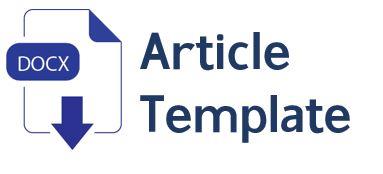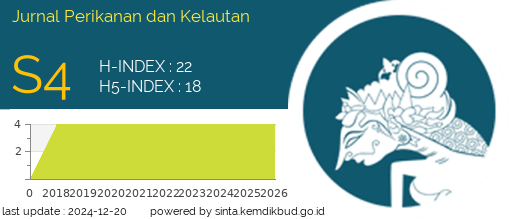Identification of Anorganic Waste in Sebalang Beach and Tanjung Selaki Beach, Tarahan Village, Subdistrict Katibung, Lampung Selatan District
DOI:
https://doi.org/10.31258/Keywords:
Garbage, Anorganic, Flow, WavesAbstract
The increase in the human population causes the amount of organic and inorganic waste to increase. The decomposition of inorganic waste is relatively longer compared to organic waste, therefore it is very harmful to the coastal environment. The purpose of this study was to determine the type, weight, distribution, density, and to compare the density and type of inorganic waste at Sebalang Beach and Tanjung Selaki Beach. Garbage collection and measurement of oceanographic parameters were carried out directly from March to April 2020. Garbage was collected on a 100 meter transect following the shoreline at each point at high tide and low tide. Current and wave were measured at two points with four repetitions. Waste data is separated by type, weight and presented descriptively. The results showed that the amount of macro-debris waste was higher than meso-debris waste with plastic waste that was more dominant than other types of waste. Sebalang Beach has a higher density of trash than Tanjung Selaki Beach.
Downloads
References
Anisa, M.N., Purwanto, dan Prasetyawan, I.B. (2017). Studi Pola Arus Laut di Perairan Tapaktuan, Aceh Selatan. Jurnal Oseanografi, 6(1): 183-192.
Arifin, M.Z. (2017). Dampak Sampah Plastik Bagi Ekosistem Laut. Bulletin Matric, 14(1):44-48.
Assuyuti, Y.M., Zikrillah, R.B., Tanzil, M.A., Banata, A., dan Utami, P. (2018). Distribusi dan Jenis Sampah Laut Serta Hubungannya Terhadap Ekosistem Terumbu Karang Pulau Pramuka, Panggang, Air, dan Kotok Besar di Kepulauan Seribu Jakarta. A Scientific Journal, 35(2): 91-102.
Ayunarita, S. (2017). Studi Pola Arus, Pasang Surut dan Gelombang di Perairan Pantai Pelawan Desa Pangke Kecamatan Meral Kabupaten Karimun Provinsi Kepulauan Riau. Skripsi. Universitas Riau. Pekanbaru. 45 hlm.
Bernawis., dan Lamona, I. (2000). Temperature and Pressure Responses on El-Nino 1997 and La-Nina 1998 in Lombok Strait.Proc. The JSPS-DGHE International Symposium on Fisheries Science in Tropical Area.
BMKG. (2020). Perkiraan Musim Hujan 2020/2021 di Indonesia. Badan Meteorologi Klimatologi dan Geofisika. Jakarta. 107 hlm.
Browne, M.A., Crump, S.J., Niven, E.L., Teuten, A., Tonkin, T., Galloway, and Thompson, R. (2011). Accumulations of Microplastic on Shorelines World Wide : Sources And Sinks. Environmental Science and Technolog 45(21): 9175-9179.
Brunner, K. (2014). Effect of Wind and Wave Driven Mixing on Subsurface Plastic Marine Debris Concentration. Thesis. University of Delaware. 132 hlm.
Cole, M., Lindeque, C., Halsband., and Galloway, T.S. (2011). Microplastics as Contaminantsin the Marine Environment: A review. Mar.Pollut.Bull 62(1): 2588–2597.
Darmadi. (2010). Karakteristik Gelombang dan Arus Pasang Surut di Pelabuhan Kejawan Cirebon. Skripsi. Universitas Padjadjaran. Bandung.
Desy, R., Sugito, R., dan Atmaja, H.W. (2018). Sampah Anorganik Sebagai Ancaman di Kawasan Ekosistem Hutan Manggrove Kuala Langsa. Jurnal Jeumpa 5(2):84-90.
Farrell, P., dan Nelson, K., (2013). Trophic Level Transfer of Microplastic: Mytilus edulis (L.) to Carcinus maenas (L.). Environ. Pollut 177(1):1-3.
Halden, R.U. (2010). Plastics and Health Risks. Annu. Rev. Publi 31:179-194.
Hammer, J.M.H.S., Kraak., and Parsons, J.R. (2012). Plastics in the Marine Environment: The Dark Side of a Modern Gift. Ed: D.M. Whitacre. In: Reviews of Environmental Contamination and Toxicology 220:1-44.
Hastuti, A.R., Yulianda, F., dan Wardiatno, Y. (2014). Distribusi Spasial Sampah Laut Di Ekosistem Mangrove Pantai Indah Kapuk Jakarta. Bonorowo Wetlands 4 (2): 94-107
Kusumawati, I., Setyowati, M., dan Salena, I.Y. (2018). Identifikasi Komposisi Sampah Laut di Pesisir Aceh Barat. Perikanan Tropis 5(1): 59 - 69
National Oceanic and Atmospheric Administration (NOAA). (2015). Turning The Tide On Trash. A Learning Guide On Marine Debris. NOAA Pifsc Cred. 96 hlm.
Plastic Europe. (2016). Plastic-The Facts 2016. An Analysis of European Plastics Production, Demand and Waste Data. 35 hlm.
Poerbandono., dan Djunarsjah, E. (2005). Survei Hidrografi. Refika Aditama. Bandung. 163 hlm.
Purwaningrum, P. (2016). Upaya Mengurangi Timbulan Sampah Plastik di Lingkungan. Jurnal Teknik Lingkungan 8(2):141-147.
Rarastri, A.D. (2008). Kontribusi Sampah Terhadap Pemanasan Global. Kementerian Lingkungan Hidup. 25 hlm.
Ryan, P.G., Moore, C.J., Franeker, J.A., dan Moloney, C.L. (2009). Monitoring The Abundance of lastic Debris in The Marine Environment. Philosophical Transactionsof the Royal Society 364(1): 1999-2012.
Sul, J.A.I.D., and Costa, M.F. (2014). The present and future of microplastic pollution in the marine environment. Environ Pollut, 185(1): 352- 364.
Tuhumury, N.C., dan Kaliky, I. (2019). Identifikasi Sampah Pesisir di Desa Rumah Tiga Kota Ambon. Jurnal TRITON, 15(1): 30-39.
UNEP. (2005). Marine litter, an analytical overview. Nairobi. Kenya. 47 hlm.
Vieira, B.P., Dias, D., Nakamura, E.M., Arai, T.I., dan Hanazaki, N. (2013). Is There Temporal Variation on Solid Waste Stranding In Mangroves, A case study in Ratones mangrove, Florianopolis. Brazil. Biotemas 26(1): 79-86.
Willoughby, N.G., Sangkoyo, H., dan Lakaseru, B.O. (1997). Beach Litter: An Increasing and Changing Problem for Indonesia. Marine Pollution Bulletin 34(6), 469-478.
Yuliadi, L.P.S., Nurruhwati, I., dan Astuty, S. (2017). Optimalisasi Pengelolaan Sampah Pesisir untuk Mendukung Keberhasilan Lingkungan dalam Upaya Mengurangi Sampah Plastik dan Penyelamatan Pantai Pangandaran. Jurnal Pengabdian Kepada Masyarakat 1(1):14-1







